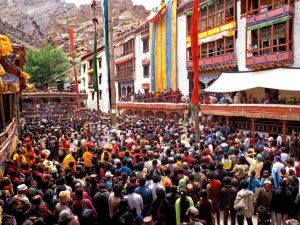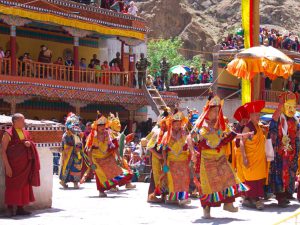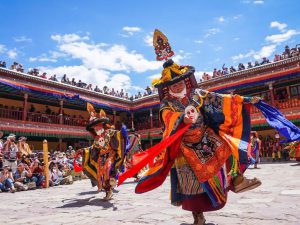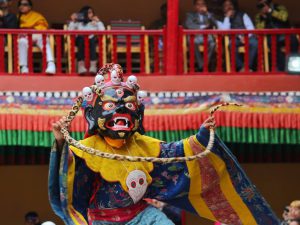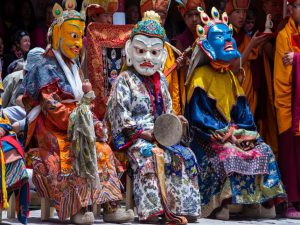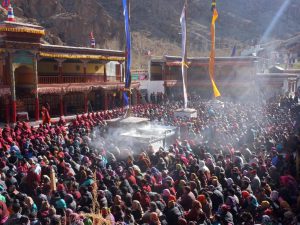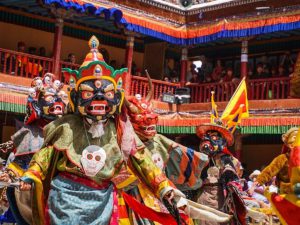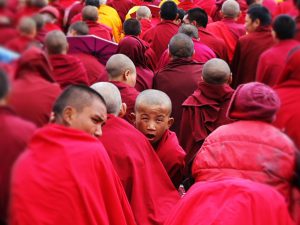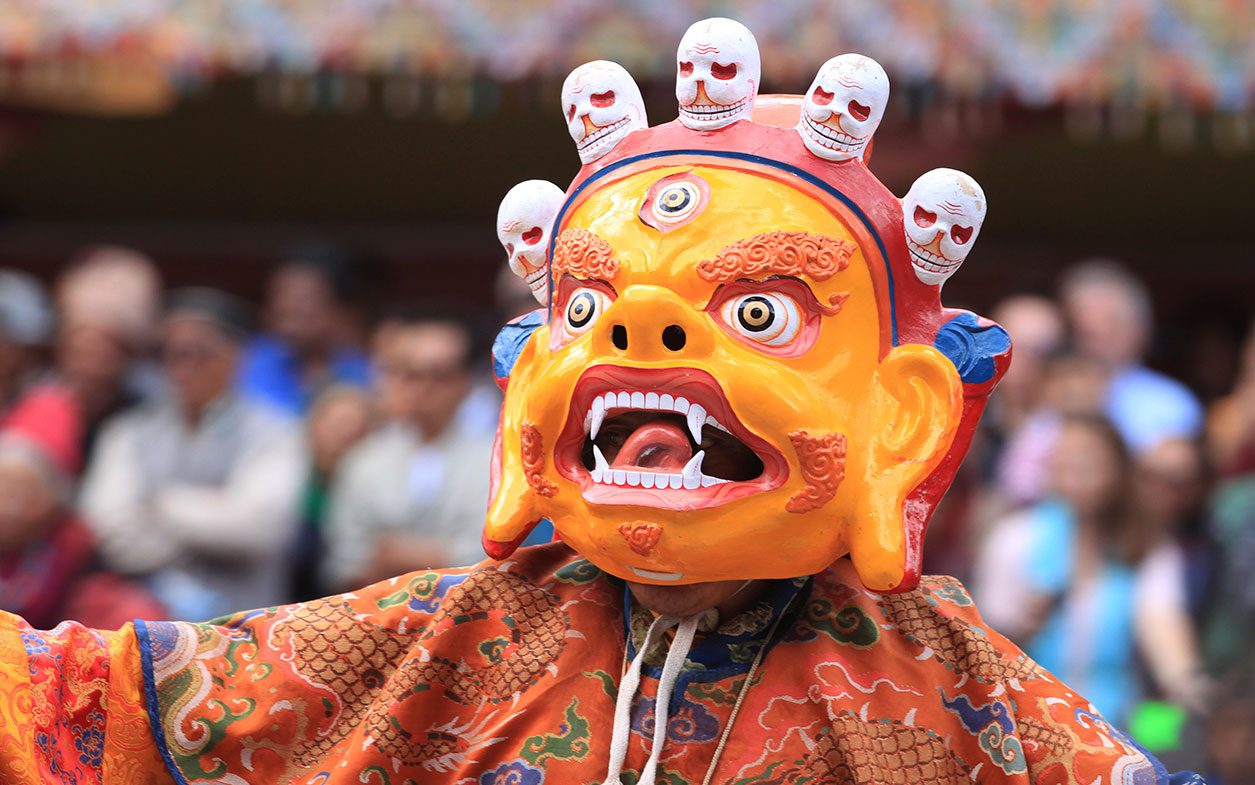
art of travel
What’s New
STAYS TO WATCH OUT FOR
New Hotels
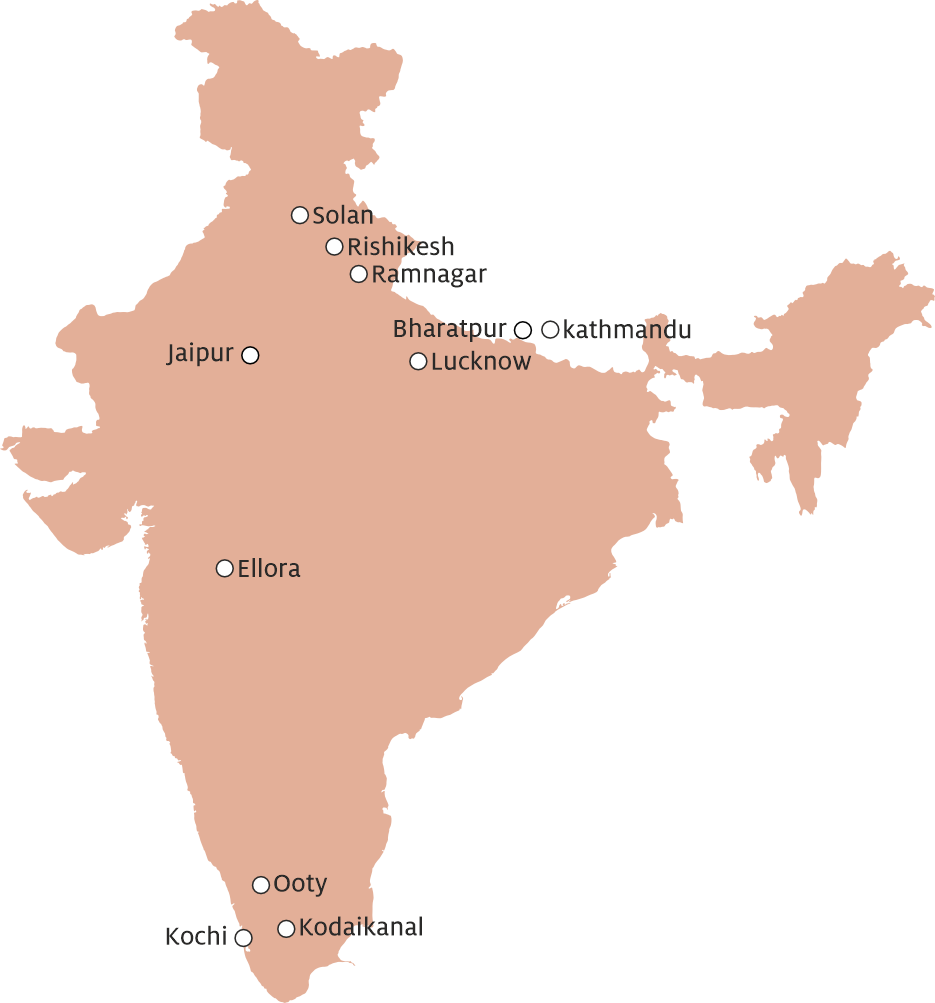
- Aashraya on the Ganga, Amola near Rishikesh, Uttarakhand
- Voco Jim Corbett, Ramnagar, Uttarakhand
- Storii By ITC Hotels The Kaba Retreat, Solan, Himachal Pradesh
- Mementos By ITC Hotels, Jaipur, Rajasthan
- Holiday Inn Lucknow Airport, Uttar Pradesh
- Dhyaana Farms, near Ellora, Maharashtra
- Isla’s Ridge, near Kodaikana, Tamil Nadu
- Marli Hill Bungalow, Ooty, Tamil Nadu
- The Baron’s Villa, Kochi, Kerala
- Hilton Kathmandu, Nepal
- Vivanta Chitwan, Bharatpur, Nepal
We Are Excited About
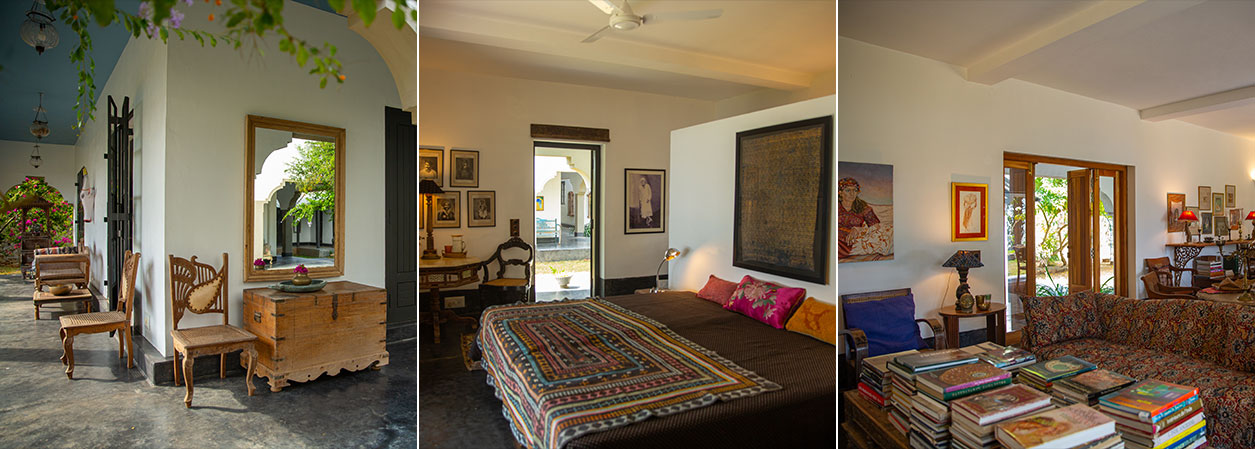
Isla’s Ridge, near Kodaikanal, Tamil Nadu
Isla’s Ridge, the new five-room guest house of designer and stylist, Isla Maria Van Damme, is the newest addition to the CGH Earth portfolio. Set in a coffee estate in the lower parts of Palani Hills within the Western Ghats, Isla’s Ridge is a short walk over from the designer’s home. Striking in their simplicity, the twin buildings house rooms, a kitchen, a dining room, and a living space. The spacious rooms and inviting sit-out areas overlooking the vista are meticulously styled by Isla herself. Each bedroom has a balcony that opens out to views of the hills. One of the rooms has a charming sit-out that opens onto the hills and the garden, allowing guests to take in the magnificent views from multiple points. The menu at Isla’s Ridge features a diverse range of cuisines, incorporating traditional dishes from the surroundings and recipes inspired by Isla’s own creations. Guests can indulge in various activities like a farm visit, go birding, indulge in yoga, meditation, art, cooking, gardening, or just sit by the swimming pool and absorb the magnificent views. Isla’s Ridge can be easily weaved into a Kerala-Tamil Nadu itinerary. It is located about 4 hours from Munnar and makes for an ideal stopover after Madurai which is 2 hrs away.
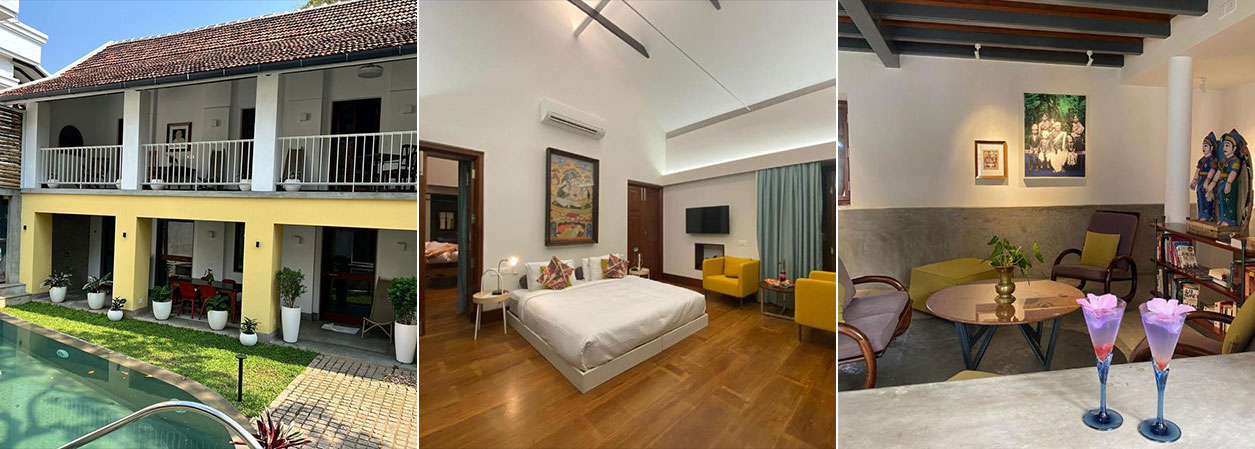
The Baron’s Villa by Malabar Escapes, Kochi, Kerala
A quaint villa tucked away in the by lanes of Fort Kochi, The Baron’s Villa is a fine example of Portuguese era architecture and has been carefully restored and refurbished. This sustainable and elegant property offers two cosy interconnected bedrooms, a living space, a fully functional kitchen, a beautiful pool to lounge in, and a lot of verandah space to chill. Guests can take a walk through their curated art collections and photographs from across India. The place is perfect for small families and couples looking for a quiet and private getaway!
Write to your relationship manager for more details
EXPERIENCES TO WATCH OUT FOR
New Experiences
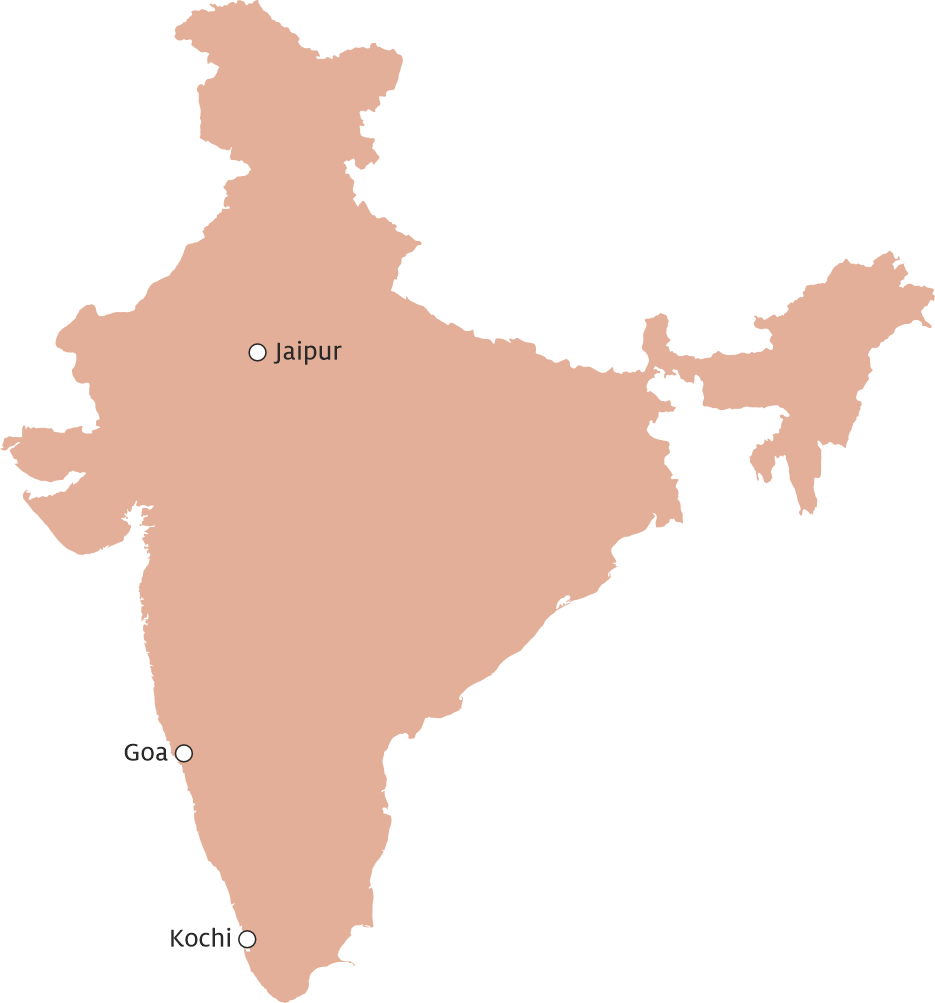
- The Story of Flower, Jaipur, Rajasthan
- Decoding Rajasthani Cuisine, Jaipur, Rajasthan
- Rediscover Cochin, Kerala
- Soulful Music and Good Food, Kochi, Kerala
- Island Kayaking, Goa
We Are Excited About
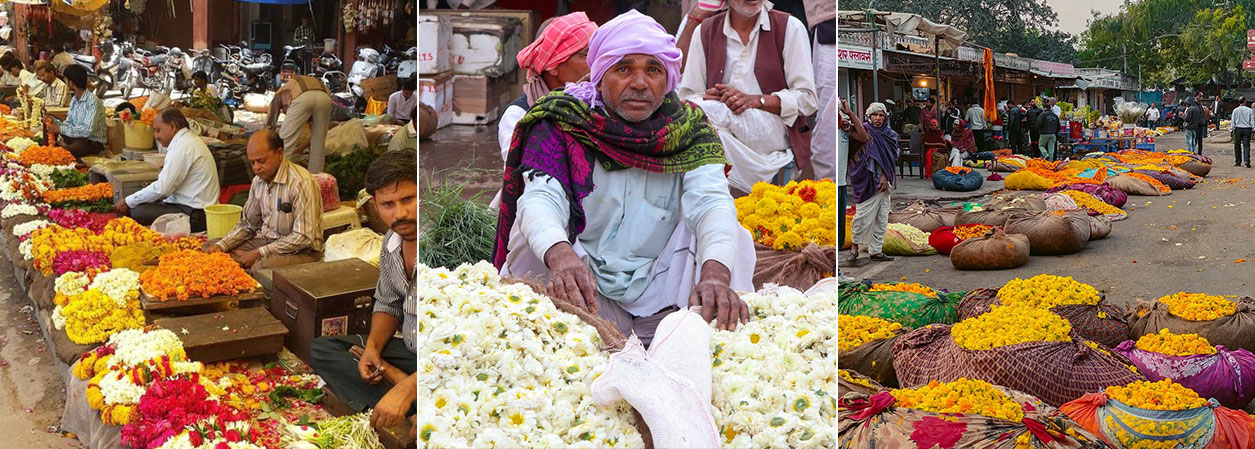
The Story of Flower, Jaipur, Rajasthan
Flowers are everywhere in Jaipur. The story of flowers isn’t another aspect of Jaipur but intrinsic to how we feel about the city. Apart from the motifs having been interwoven into the architectural fabric of Jaipur, the visual metaphor of the “Pink City” makes us think of Jaipur fondly for its legendary hospitality, and often the flower becomes a central theme.
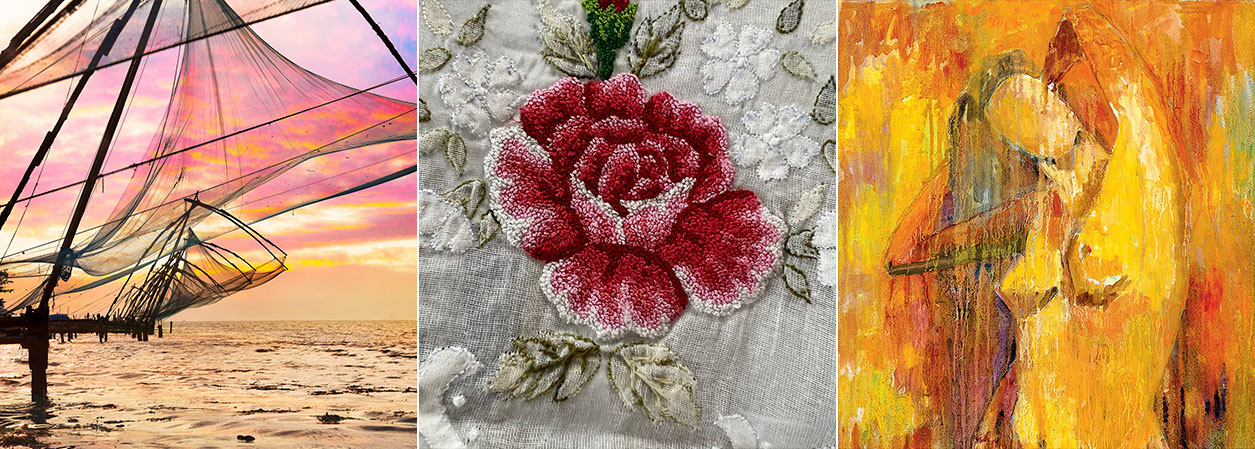
Rediscover Cochin, Kerala (Exclusive Signature Tour for FITs)
This experience curated jointly by the Destination Knowledge Centre and our Cochin office not only takes in the must-sees of Fort Cochin and Mattancherry but also celebrates its diversity and ability like never before through authentic encounters with creative people and spaces.
Write to your relationship manager for more details
ITINERARY OF THE MONTH
The Heritage Trail
Delhi – Agra – Jaipur – Udaipur – Ahmedabad – Mumbai
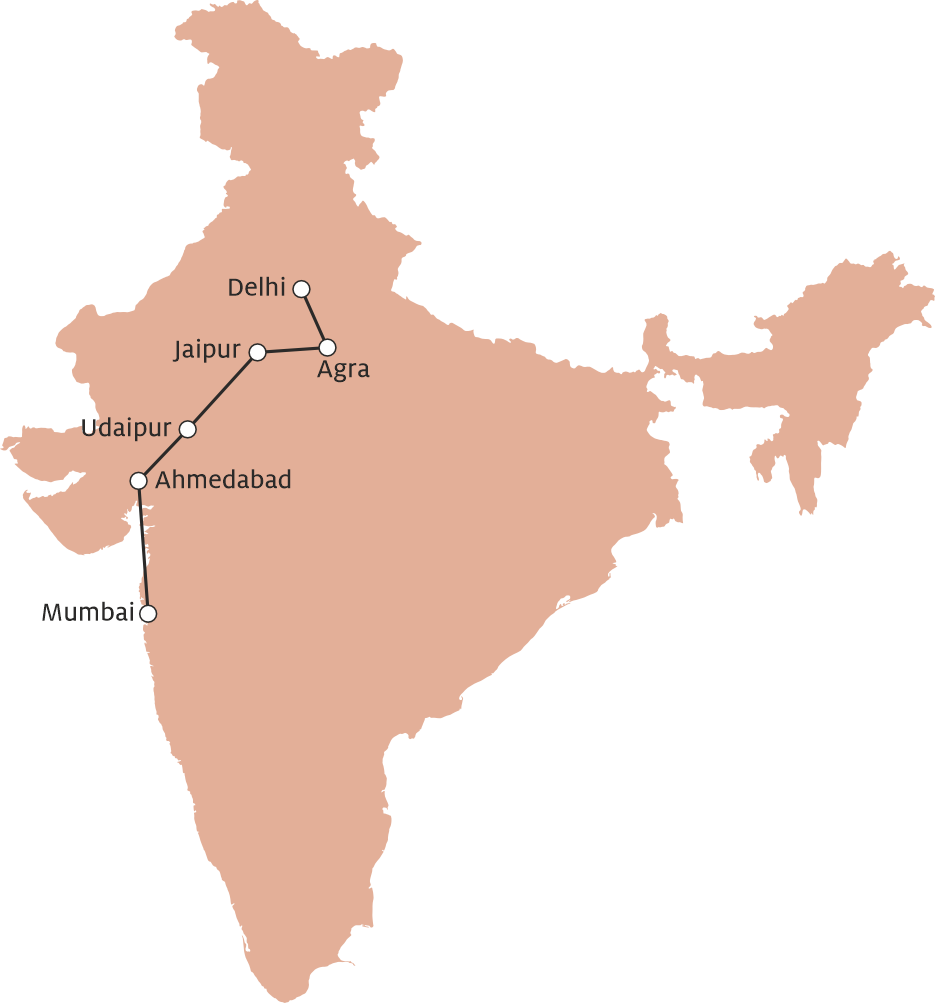
Highlights of the Tour
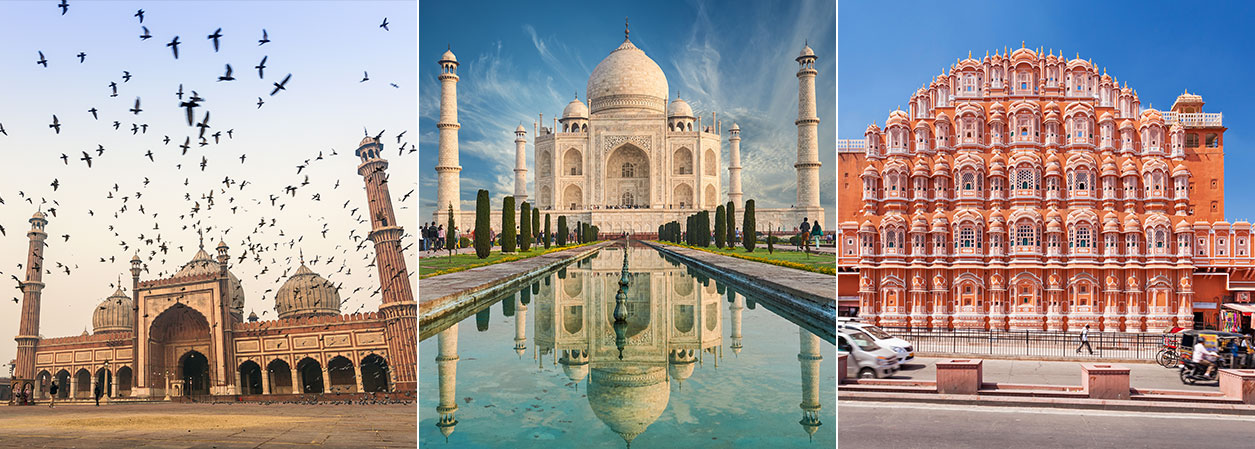
- Experience a specially curated full day tour of Delhi
- Admire the Jewel of Mughal Art in India, the Taj Mahal
- Discover recipes from the royal kitchen of Rajasthan and enjoy authentic Rajasthani cuisine.
- Explore the old city of Jaipur on a bicycle, interact with locals, visit the palaces and forts, and take a ride on an e-rickshaw driven by a woman which is a part of a responsible tourism initiative.
- Discover the best kept secrets of the Amber fort and Rajasthan’s traditional wisdom
- Trace the hunting trail of the Udaipur Royals on foot
- Stroll through the heritage sites of old Ahmedabad
- Savour the traditional food of Gujarat
- Spend time at SEWA, established in 1972 to support self-employed women in the informal economy and advocate for their social justice, equality, and fair treatment.
- Visit the iconic Gandhi Ashram at Sabarmati and the Calico textile Museum
Write to your relationship manager for the detailed itinerary.
NEW UPDATES
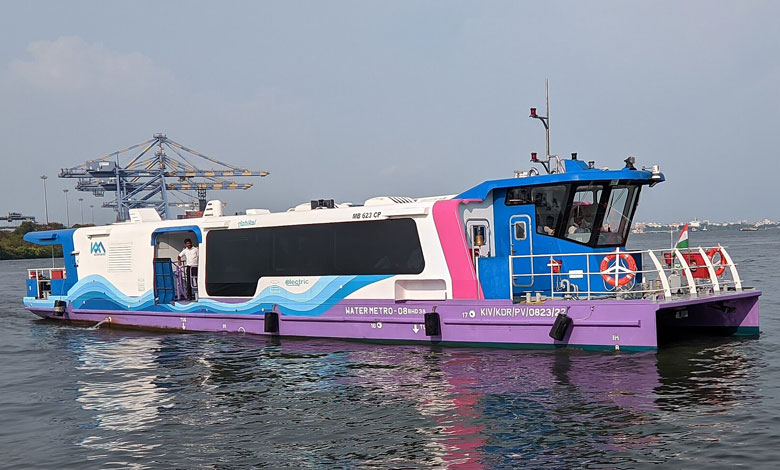
Kochi Water Metro Service
Starting from April 21st, the Kochi Water Metro has started its service to Fort Cochin. The new Fort Cochin Terminal is equipped with special pontoons designed to withstand sea waves, ensuring passenger safety. Terminal interiors feature directional signs and notices in Malayalam, Hindi, English, Spanish, German, and French. Exciting experiential activities integrating the water metro are in the works. Stay tuned.
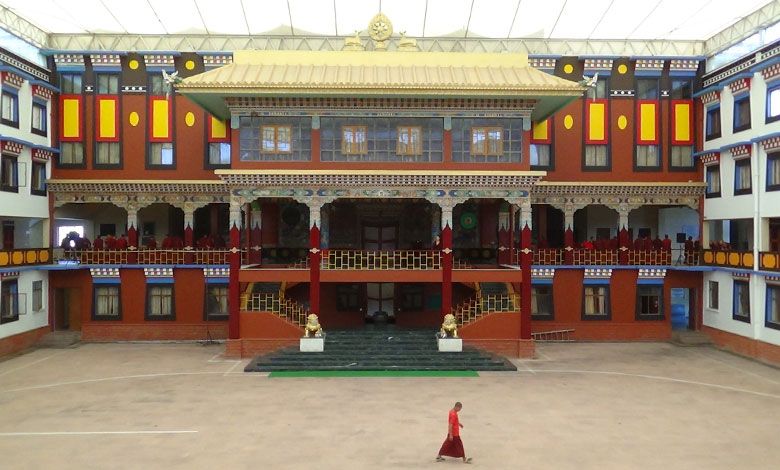
New Branch office in Dharamshala
We have expanded our network with the recent opening of our branch office in Dharamshala, underlining the strategic importance of this city and the state of Himachal Pradesh.
Write to your relationship manager for more details
Stories from India
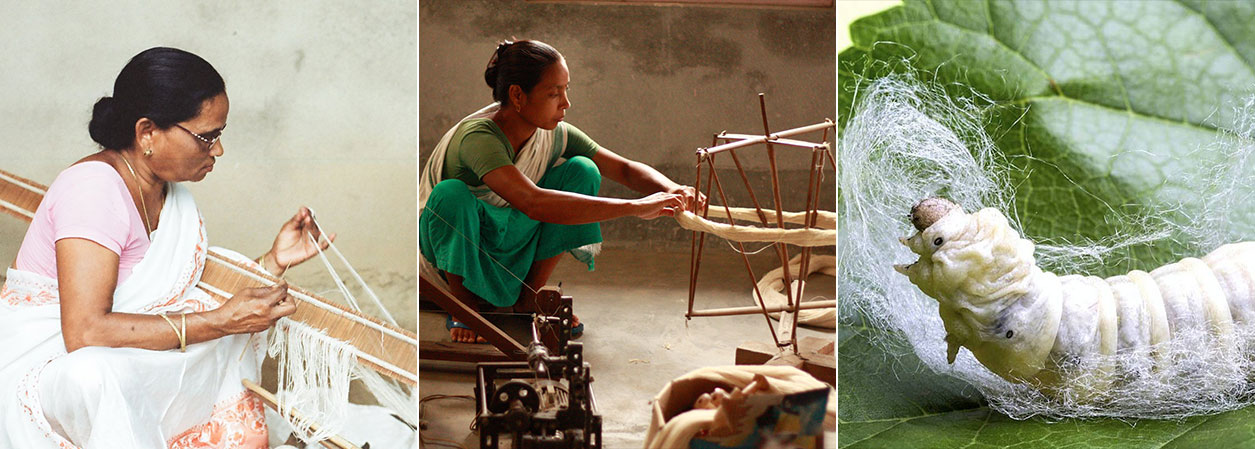
Vibrant Handmade Traditions
Northeast India is home to 150 tribal communities, each with its own folk songs, folk dances, folk instruments, and a mind-boggling variety of arts and crafts made for their personal use as well as for their livelihood. Northeast India is known for its gorgeous hand-woven TEXTILES. Textiles in Northeast India are not a style statement, but an assertion of identity. Each community has its distinct colour, patterns, and traditional design motifs. And it is not just an assertion of identity but also a medium where legends, myths, and stories of a tribe, clan, village, or even a region are passed on from one generation to another, especially among the tribal population of Northeast India whose origin is shrouded in mystery and doesn’t have a written history of their own. Mahatma Gandhi during a visit to Assam in 1946 famously remarked, “Assamese women weave dreams on their looms.” The Mahatma was at Sualkuchi, not too far away from Guwahati, the capital city of Assam, where weavers, once upon a time, used to weave their magic on SILK only for the royals. Today Sualkuchi is the hub of the silk trade in Assam with nearly 18,000 weavers, both men and women, and 200 wholesale traders with an annual turnover of 11 Million US Dollars. Sualkuchi is famous all over the world for its warm woolly white Eri or PEACE SILK or Ahimsa Silk or non-violent Silk which is processed without killing the silkworm. The silkworm is allowed to complete its natural life cycle and emerge from its cocoon which is then used to produce silk. Eri has been traditionally a sought-after item by the Buddhist Monks in the Eastern Himalayas. It is now gaining popularity among the vegans. Whilst weavers of Meghalaya also make stunning pieces of handloom out of Eri in the same non-violent process as Sualkuchi, it is also true that the Eri worm, unlike in Assam, is eaten by the locals of Meghalaya as a source of protein and also sold in the village markets for consumption, a tradition for centuries. Up in the cooler climes of the mountains in Northeast India with extreme cold in the winter, weavers weave their SHAWLS on loin looms with beautiful colours and designs distinctive to their tribe, clan, or village. Before wool came to Northeast India, the threads for the shawls came from the bark of trees. These shawls also play the role of transmitting the history and mythology of the tribes encapsulated in fine, often complex weaves and designs. It is the women in Northeast India who do all the weaving. Girls learn the art of weaving from a young age and it is considered an important part of womanhood. Until the recent past, a woman was not considered to be ready for marriage unless she could weave deftly. Weaving tools and equipment were a part of the bridal trousseau. That said men from certain tribal communities of Assam are also experts in weaving, particularly men from the Bodo community who were the first in Northeast India to rear silkworms and make textiles out of silk.
Men in Northeast India are very good with BAMBOO AND CANE which grows abundantly in the region and is an integral part of the culture. The men folk of the tribes of Arunachal Pradesh and Assam are known for creating beautiful artefacts from Bamboo and cane – be it everyday household items, decorative pieces, or the hanging bridges over the rivers which could be over a thousand feet long. WOOD is another medium in which the menfolk of Northeast India excel in. From the massive wooden doors with elaborate carvings in the villages to decorating the traditional dormitories for men in Nagaland to musical instruments, from centre tables, partition screens, and chairs to exquisite images of the Buddha in Sikkim to masks used in religious rituals and folk theatre of Assam, Sikkim, and Manipur – all bear testimony to their skill in wood carving. BELL METAL trade is an important cottage industry in Assam and in Hajo, not too far away from Sualkuchi; the menfolk engaged in the trade are the descendants of the Mughal soldiers who were captured during their many invasions. It is worth mentioning here that the Mughals had invaded Assam 17 times and each time they were forced to retreat. JEWELRY made from gold to bones to insect wings makes the ornaments of Northeast India very interesting and unique. Traditional gold jewellery in Assam is completely handmade and the designs are inspired by flora, fauna, household items, and even folk musical instruments. No bridal trousseau in Assam is complete without a set or two of traditional jewellery. In medieval Assam, gold dust was extracted from the sands of various rivers using a pan and was used to manufacture gold. The village of Ranthali enroute to Kaziranga National Park from Guwahati is the hub of Assamese jewellery with 90% of the villagers engaged in the business of making handmade jewellery. While Nagaland is known for its jewellery made out of cowrie shells and glass shards, the tribes of Arunachal Pradesh are experts in making brass and gold jewellery using wax moulds. POTTERY is another vibrant handmade tradition of Northeast India. Meghalaya and Manipur are known for their exquisite black stone pottery which doesn’t use the potter’s wheel and still relies on ancient handmade tools. They make for excellent cookware. Likewise, the women potters of Salmara in Majuli, Asia’s largest river island in Assam, make their pottery without using the potter’s wheel. From beating the clay to shaping the pots to finally polishing them, they use ancient wooden tools, true to a technique that can be traced back to the Bronze-Age Harappan civilization.
Write to your relationship manager for more details.
Sustainability and Us
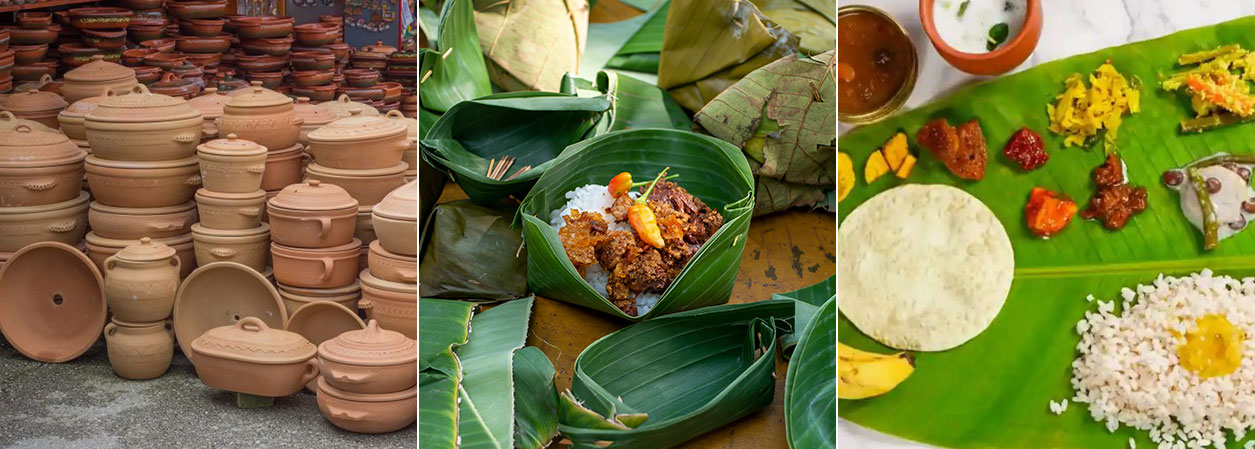
Culinary Wisdom: Traditional Utensils of India’s Kitchen
By Inderjeet Rathod, Product Manager, Destination Knowledge Centre
The use of sustainable materials in traditional Indian utensils is rooted in the country’s rich history and diverse cultural traditions. Over generations, artisans have perfected the art of creating utensils that are not only durable and practical but also environmentally friendly. This harmonious blend has made these utensils, often made from materials such as clay, copper, brass, banana leaves, and wood, not only serve functional purposes in cooking and serving but also embody a cultural heritage that values sustainability and resourcefulness.
In this context, exploring the usage of traditional utensils in India not only offers insights into the country’s cultural heritage but also provides valuable lessons in sustainable living.
Clay or Earthenware Utensils: Clay pots, pans and other utensils have been an integral part of Indian kitchens for generations. Their porous nature allows for natural cooling, making them ideal for storing water and cooking, while also adding a unique flavour to certain dishes. This natural cooling property makes them especially useful in hot climates, serving as eco-friendly alternatives to modern refrigeration.
Copper Utensils: Copper utensils, valued for their antibacterial properties, are commonly used for storing water and cooking certain dishes. The use of copper utensils is believed to have health benefits, adding to their appeal in traditional Indian households. Additionally, the longevity and recyclability of copper make it a sustainable choice for kitchenware.
Brass Utensils: Brass utensils, known for their aesthetic appeal and durability, are often used for special occasions. Their use in serving food adds a touch of elegance to the dining experience, reflecting the cultural significance of food in Indian traditions. The durability of brass ensures that these utensils can be passed down through generations, reducing the need for new production and minimising waste.
Wooden Utensils: Wooden utensils such as ladles, spatulas, and rolling pins have been used in Indian kitchens for centuries. Their gentle nature makes them suitable for various cooking tasks, and their natural aesthetic adds a rustic charm to the culinary process. The use of wooden utensils also reduces the reliance on plastic alternatives, contributing to a more sustainable kitchen environment.
Banana Leaf Plates: In many parts of India, especially in South India, banana leaves are used as plates for serving meals. Not only are they biodegradable, but they also impart a subtle flavour to the food, enhancing the dining experience while minimising environmental impact. After use, banana leaves can be composted, making them a zero-waste alternative to disposable plates.
These traditional utensils, deeply rooted in Indian culture, embody the principles of sustainability by utilising natural materials and minimising waste. Their continued use in Indian households reflects a commitment to preserving traditional practices while embracing eco-friendly alternatives. As the world seeks sustainable solutions, these age-old utensils serve as a reminder of the wisdom of the past and a guide to a more sustainable future.
Explore
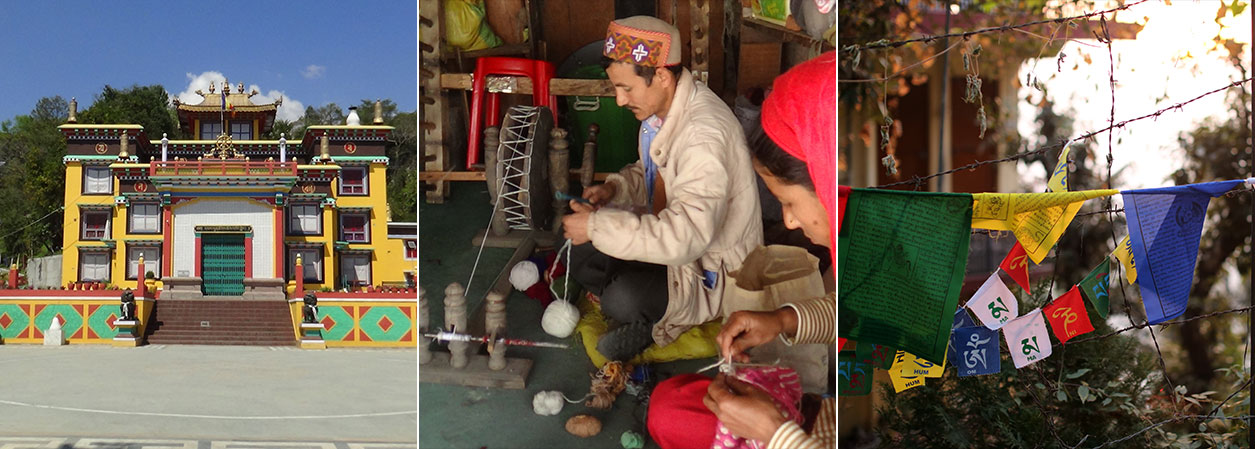
Dharamshala – The Gateway to ‘Little Lhasa’
From the Travel Diary of Inderjeet Rathod, Product Manager, Destination Knowledge Centre
Dharamshala is situated in the Kangra Valley of the north Indian state of Himachal Pradesh. It is nestled in the shadow of the majestic Dhauladhar range and serves as a gateway to McLeod Ganj, also known as ‘Little Lhasa’, the capital of the Tibetan government in exile.
Best time to visit:
The best time to visit Dharamshala is between mid-February and end-June. Throughout this period, the weather is pleasant with temperatures ranging between 20°C to 35°C. The valley comes alive with the vibrant colors of the Rhododendrons, beautiful views of the snow peaks, and pleasant weather – ideal conditions to spend the day outdoors.
Must See:
NORBULINGKA INSTITUTE: The institute is named after the summer residence of the Dalai Lama in Lhasa, Tibet. It serves as a custodian of Tibetan culture, offering training, education, and employment to Tibetans. Norbulingka produces high-quality, traditionally crafted art objects, clothing, and home furnishings. Do visit the two-storied ‘Seat of Happiness Temple’ set amidst Japanese-inspired gardens. It is renowned for its 1,173 murals of Buddha, frescoes of all the Dalai Lamas, and drawings depicting the life of the 14th Dalai Lama.
LIBRARY OF TIBETAN WORKS AND ARCHIVES: Founded in 1970 by the 14th Dalai Lama, the Library contains important Tibetan Buddhist manuscripts and archives related to Tibet’s history, politics, culture, and art. It possesses more than 80,000 manuscripts, books, and documents; over 600 Thangkas, Statues, and other artifacts of Buddhist heritage; 6,000 photographs, and many other materials.
THE TIBET MUSEUM: Established in 1998, the Tibet Museum now has a collection comprising over 30,000 photographs, a traveling exhibition, and a permanent exhibition that documents the Tibetan journey into exile across the Himalayan ranges. More than a museum, it is a library of facts, documents, videos, installations, and objects related to the Chinese occupation of Tibet.
TSUGLAGKHANG TEMPLE: It is the most renowned Buddhist monument in McLeod Ganj. There are three magnificent images of Buddha, including a statue of Shakyamuni, statues of Avalokitesvara, and Padmasambhava. This monastery serves the Dalai Lama exclusively.
My Favourites:
DAY OF THE BUDDHA: Start the day with a Kora (a Tibetan Buddhist ritual of circumambulating a sacred site in a clockwise direction) around the Dalai Lama Monastery, which is a deeply spiritual experience and sets the tone for the rest of the day’s explorations. The tranquil atmosphere and stunning architecture of the monastery complex are sure to leave a lasting impression.
Continue to the Norbulingka Institute, also known as The Treasure Garden, which offers a unique opportunity to witness the preservation of Tibetan culture through art and craft. Exploring the institute’s workshops and witnessing artisans practicing traditional crafts provide valuable insights into Tibetan craftsmanship and artistic traditions.
Visit the Gyuto Tantric Monastery, renowned for its Tantric Choir’s mesmerizing chanting. The distinctive style of chanting, using the throat for amplification, creates a deeply meditative and hypnotic ambiance.
End the tour at the Dolma Ling Nunnery to watch the nuns engage in animated debates. Witnessing these debates offers a glimpse into the Tibetan Buddhist education system.
NADDI VILLAGE TO DHARAMKOT WALK: Start the day at the Tibetan Children’s Village which sets a meaningful tone for the journey ahead, showcasing the efforts made to support Tibetan children in exile. The drive to Naddi offers breathtaking views of the Dhauladhar Mountain Range, providing a scenic backdrop for the start of the walk.
While in Naddi, visit the Golu Mata Temple. The temple, nestled amidst serene surroundings, offers a glimpse into local religious practices and beliefs. Continue downhill towards Dharamkot which is a leisurely descent. Along the way, soak in the natural beauty of the region and interact with locals. End the walk near the Vipasana Centre in Dharamkot. The vehicle waiting at this site will drive you back to the hotel.
BIR–SHERAB LING MONASTERY WALK: This walking tour is ideal for guests of all ages and fitness levels. The locals call this walk ‘a baby trek’ Start from Bir, renowned for its aero sports, which sets the stage for an exciting journey. Passing through quaint villages, a tea garden, and a patch of pine forest offers a glimpse into the natural beauty of the region.
Crossing a paddy field adds a touch of rustic charm to the walking tour, allowing guests to immerse themselves fully in the local way of life. The short but steep ascent before reaching the Sherab Ling Monastery adds a bit of excitement and challenge to the journey.
Arriving at the Sherab Ling Monastery offers a unique opportunity to experience its serene ambiance and positive vibes. Spending time here allows for reflection, meditation, interaction with the monks, and even a prayer ceremony if guests are lucky.
DAY OUT IN KANGRA VALLEY: Begin the day with a visit to the Kangra Fort, dating back an astonishing 3500 years. It offers a fascinating glimpse into the region’s rich history and its resilience against various invasions and natural disasters. Explore the fort and learn about its historical significance.
The slow train ride on the Kangra Toy Train – a colonial-era engineering marvel – provides a leisurely journey through the picturesque hills and valleys of the region, offering panoramic views of the majestic Dhauladhar range.
Enjoy a sumptuous lunch at Taragarh Palace steeped in history and elegance.
End the tour at Baijnath Temple, dating back to the 13th century. The temple’s intricate stone carvings and architecture provide a glimpse into the region’s religious heritage.
Accommodation:
Dharamshala offers a diverse range of accommodations to suit various preferences and budgets. From luxurious hotels with modern amenities to charming heritage properties that reflect Dharamshala’s rich history, guests can choose to stay at a place according their budget.
Some of the well-known Hotels and Resorts in Dharamshala are:-
- Hyatt Regency Dharamshala Resort – Five Star
- Storii By ITC Hotels Amoha Retreat – Five Star
- Norbu The Montanna – Five Star
- Radisson Blu Resort – Five Star
- Fortune Park Moksha – Four Star
- Norbu House – Smart Budget
- Serkong House – Smart Budget
- Chonor House – Heritage Boutique
- Brij Anayra – Heritage Boutique
- Clouds End Villa – Heritage Boutique
- Welcomheritage Grace Hotel – Heritage Boutique
- Tree of Life Birdsong Chalets – Boutique
- Eagles Nest – Boutique
Accessibility:
- Amritsar lies 200 km South-West of Dharamshala
- Chandigarh lies about 240 km South of Dharamshala
- Pragpur lies 62 km South of Dharamshala
- Anandpur Sahib, a major spiritual centre of the Sikh Religion and the venue of the Hola Moholla Festival is located 160 km south of Dharamshala.
- Pathankot is one the closest railheads, located 86 kilometres from Dharamshala in the western direction. It is connected by direct trains to major Indian cities.
- Amb Andura is the other closest railhead, located 89 kilometres from Dharamshala in the southern direction. It is connected by the Vande Bharat Express from Delhi.
- Gaggal Airport is about 14 km away from Dharamshala in the South-West direction and has direct flights from major Indian cities.
Weaving it into an itinerary:
Delhi – Amritsar – Dharamshala – Pragpur – Shimla – Delhi
Write to your relationship manager for more details
Inspiration
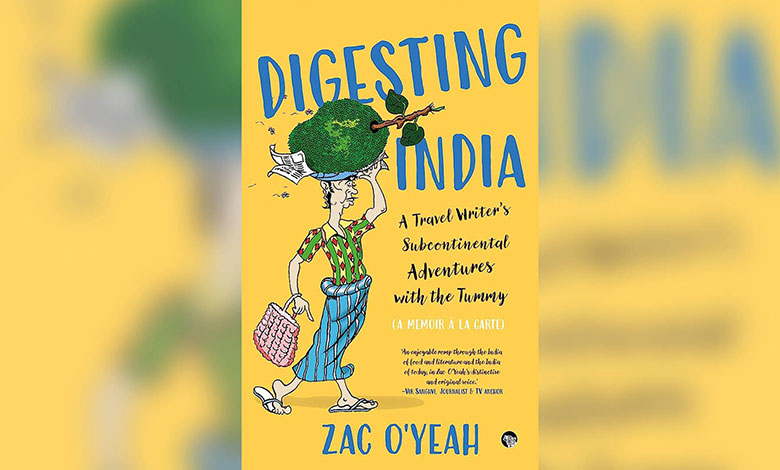
Book Review by Bene Eapen
Digesting India by Zac O’ Yeah
Central Idea of the Book: “Digesting India” is a riveting adventure that takes readers through the landscapes of Indian culinary art, as explored by Zac O’Yeah, a Scandinavian-origin Indian novelist with a readiness to stomach anything and everything that is palatable. This book creates an intricate melange of things that O’Yeah loves most about life—eating, drinking, traveling, and getting acquainted with total strangers—in a delightful manner. Through his journey, he tries to understand India through its food culture. This fast-paced story of a traveller’s untiring quest for new cultural and culinary experiences is intriguing. In this book, one learns about dishes that we may never have heard of, and peculiar food habits that we never knew existed, such as the ‘spare parts’ tour that begins in Shivajinagar, the slaughterhouse area of Bengaluru. He talks about the pleasures of drinking beer in Bengaluru, toddy in Kerala, eating boiled vegetables and masala-less curries in Sevagram, the Mahatma’s ashram in Maharashtra, to prepare himself for the fiery ‘lal maas’ in royal Rajasthan. He discovers Goa’s literati culture while sipping cashew fenny with Nobel laureates Orhan Pamuk and Amitav Ghosh, finds two of his favourite foods—mushrooms and cheese—in Bhutan’s ‘shamudatsi’, and, in a delightful digression, finds out—while still on earth—what astronauts eat.
My View: “Digesting India” takes readers through India’s underbelly. Zac O’Yeah travels tirelessly from one Indian state to another, tasting, digesting local food, and observing the food habits of the common people. He gets into the details of local food, its origin, and how it brings people together. Zac uses his knowledge and wisdom to enter local eateries in each state and gets to meet people from different walks of life. He guides/counsels readers on actual ways of gulping a beer in Bengaluru, toddy in Kerala, and cashew fenny with the literati in Goa. The book takes readers slowly meandering through Bengaluru, in which he makes a chance discovery of a town known as Beershop, which specialized in brewing beer for the colonial troops which had low alcohol content and hence was healthier for the troops. He also talks vividly about Kolar Gold Mines and the life of the person in charge of the mines, whose house has now turned into an abandoned bungalow used by locals for drinking and making merry. Along with food discoveries, Zac also traces the footsteps of renowned writers like Somerset Maugham, EM Forster, and Rudyard Kipling who have also visited these specific places. His travels take him to Gujarat’s delicious restaurants and Rajasthan’s Jantar Mantar, where he learns about the freeze-dried idlis being readied for astronauts and mentions Delhi as the city of Chaat and Chandigarh as the Land of Tandoori Chicken.
My Rating: Must Read
Festival to Watch Out For
Hemis Festival, Ladakh
16th -17th June 2024
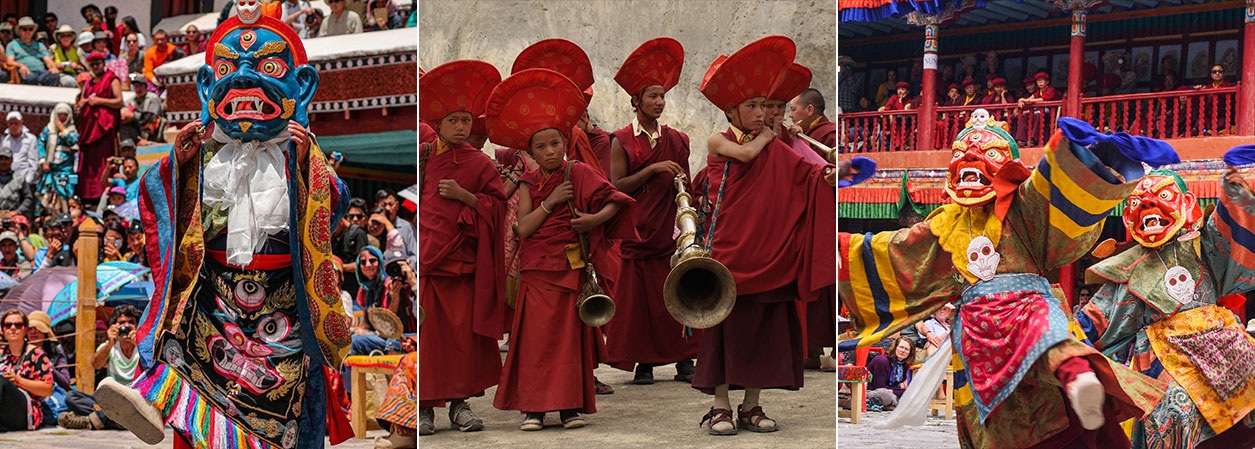
The Hemis Festival is a vibrant two-day celebration held in Ladakh, India, to honour Guru Padmasambhava, who introduced Tantric Buddhism in the Himalayan kingdom. The courtyard of Hemis Monastery, the biggest Buddhist monastery in Ladakh, is the stage for this famous festival. The colorful pageant falls on the 10th day of the Tibetan lunar month. The local people are seen dressed up in their finest traditional garb for the occasion. Monks perform splendid masked dances and sacred plays to the accompaniment of cymbals, drums, and long horns. The head monk presides over the function. A colorful fair, displaying some beautiful handicrafts, is the special highlight of the festival.
The Chaam is the highlight of the festival where the monks perform their dances wearing fierce masks. As a part of the dance, a sculpture made out of dough is destroyed with a sword, representing the vanquishing of the demons by the wisdom and compassion of Padmasambhava. The sculpture is then broken and burnt, and the ashes are thrown in different directions for the purification of the soul after death.
Hemis is about an hour’s drive from Leh. We recommend staying at Shel Ladakh, a 3-bedroom homestay located in the village of Shey (about half an hour away from Hemis).
Write to your relationship manager for more details.
RESOURCES
SITE LINKS
CONTACT US
+ 91 (124) 4563000
Tower B, Delta Square, M.G. Road, Sector 25, Gurgaon - 122001, Haryana, National Capital Region of Delhi, India


